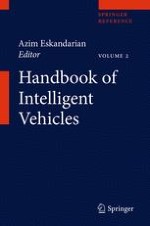Abstract
This chapter focuses on a methodological comparison of the energy consumption of passenger cars with conventional internal combustion engine and new electric powertrains.
The scientific methodology of the presented knowledge relies on simulation models validated by real-world tank-to-wheel emission and energy measurements performed in urban and extra urban areas as well as on freeways.
Furthermore, an overview of the recent development of energy storage systems, energy converters, and powertrains in developed regions is given.
Based on a statistically average European passenger car, fuel and energy consumption of conventional diesel, gasoline hybrid, fuel cell, and battery electric powertrains are compared. Special focus is given to the real-world energy consumption of the vehicles. This means auxiliary power units of the car such as onboard electronics, safety systems, heating, and air conditioning have significant influence on the fuel consumption, especially in driving conditions with lower speeds.
The results show that for typical real-world operational conditions during the seasons of a whole year the hybrid vehicle and, with some limitations in the range of operation, fuel cell vehicle are comparable to the usability of a conventional vehicle. Battery electric vehicles (BEV) have very limited range.
For the consistent comparison of propulsion systems with such different energy carriers, like liquid fuels, gaseous hydrogen, and electric power, the energy consumption with respect to primary energy supply was carried out. Based on this approach, the distance related energy consumption of hybrid and fuel cell vehicles is somewhat favorable compared to the conventional vehicle. Battery electric vehicles consume significantly more energy due to inefficiencies in power production and transmission as well as charging and discharging losses.
Nevertheless, cars with fuel cell and battery electric propulsion systems have the considerable benefit of local emissions-free driving.
